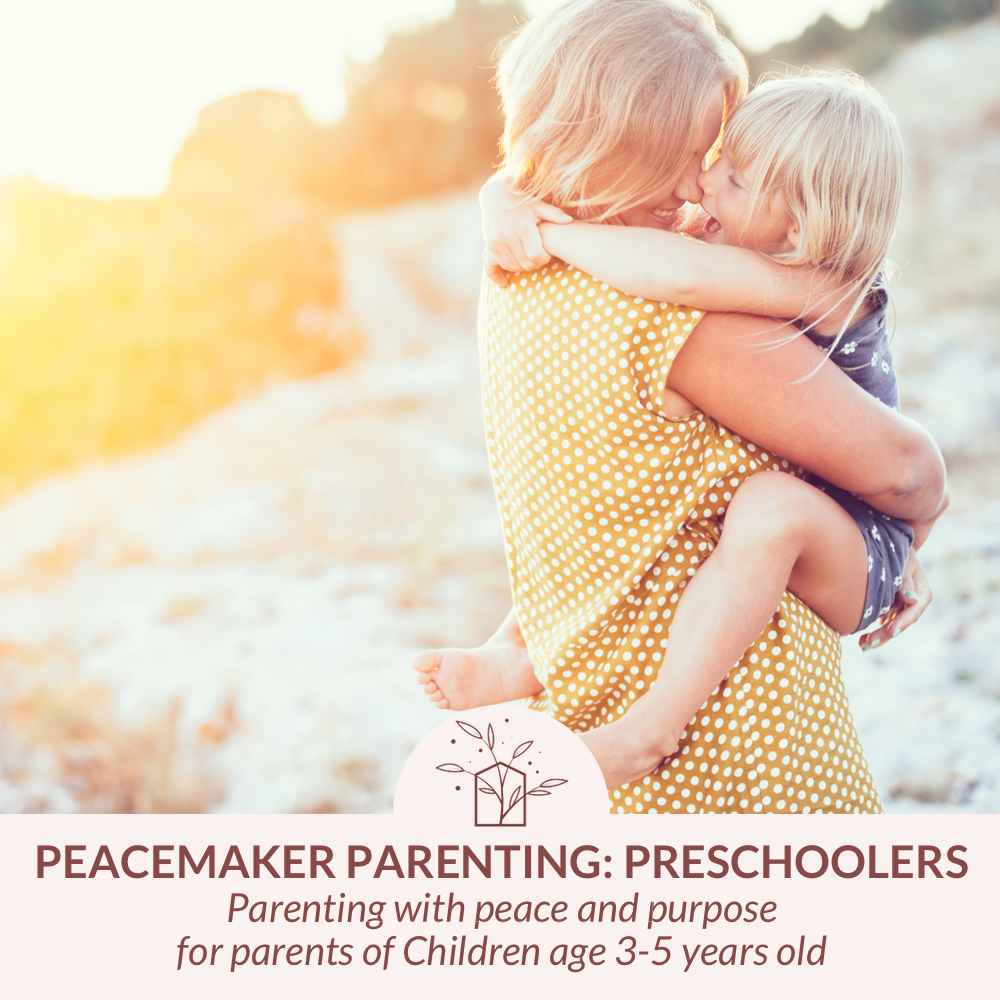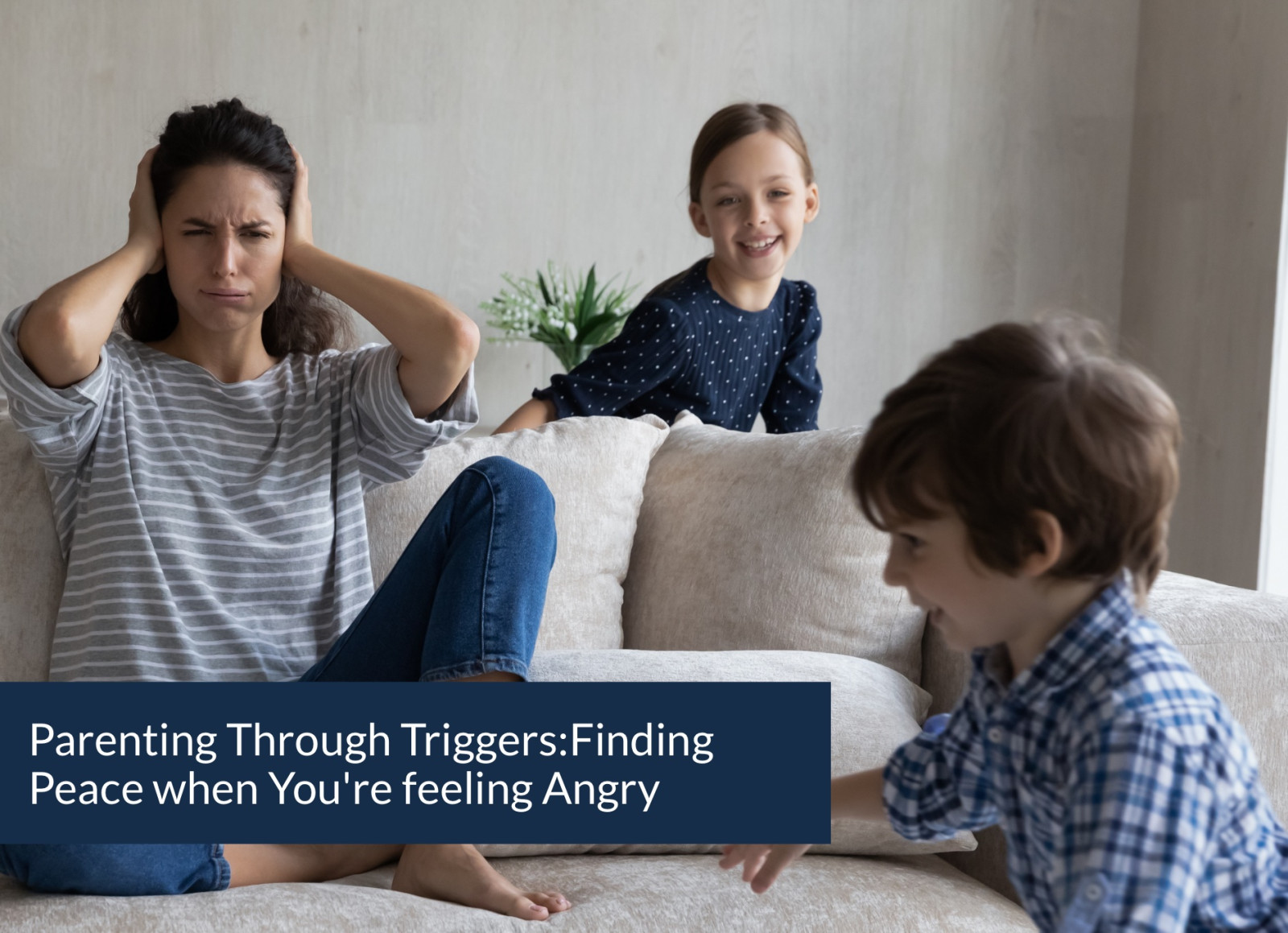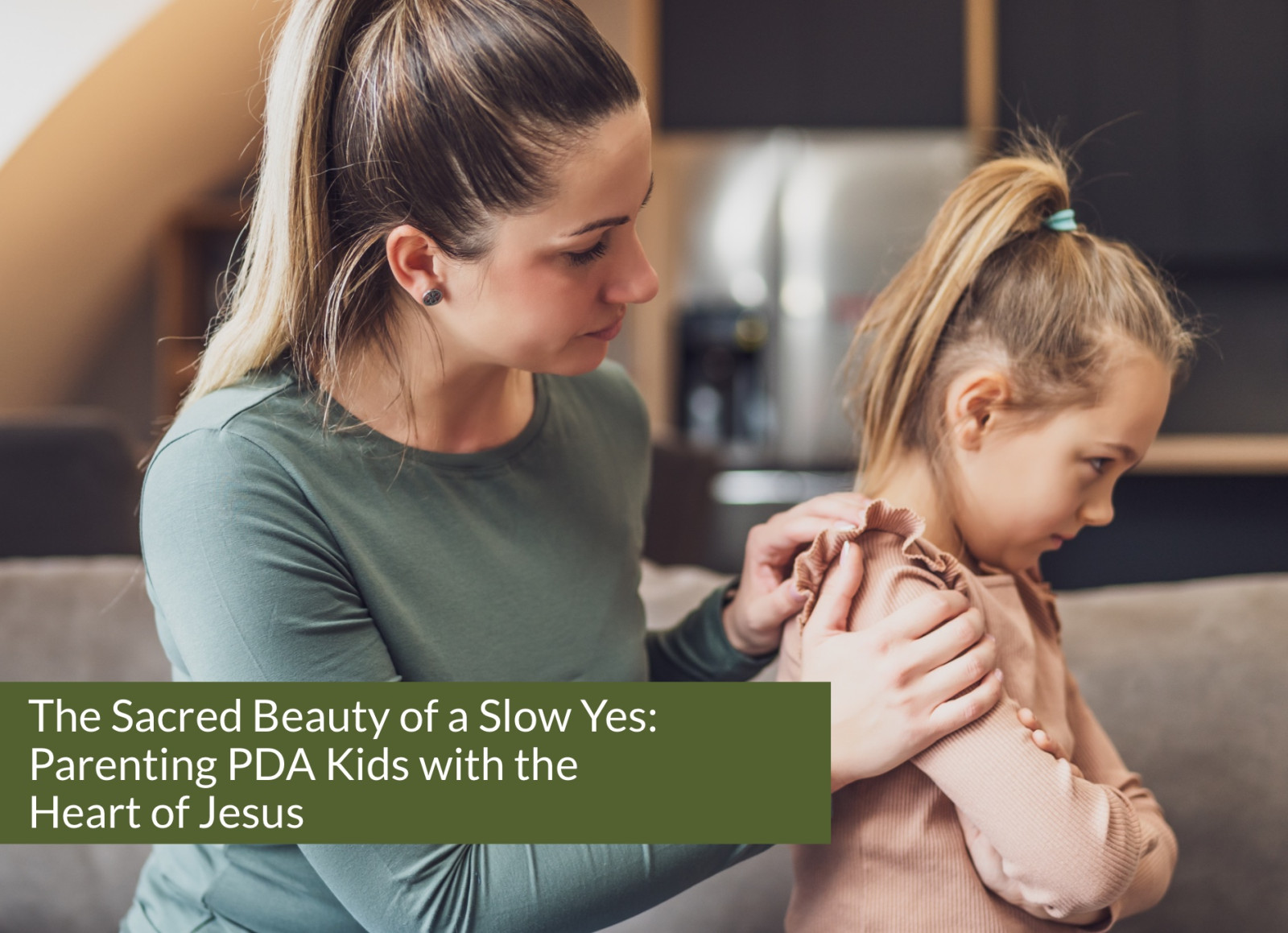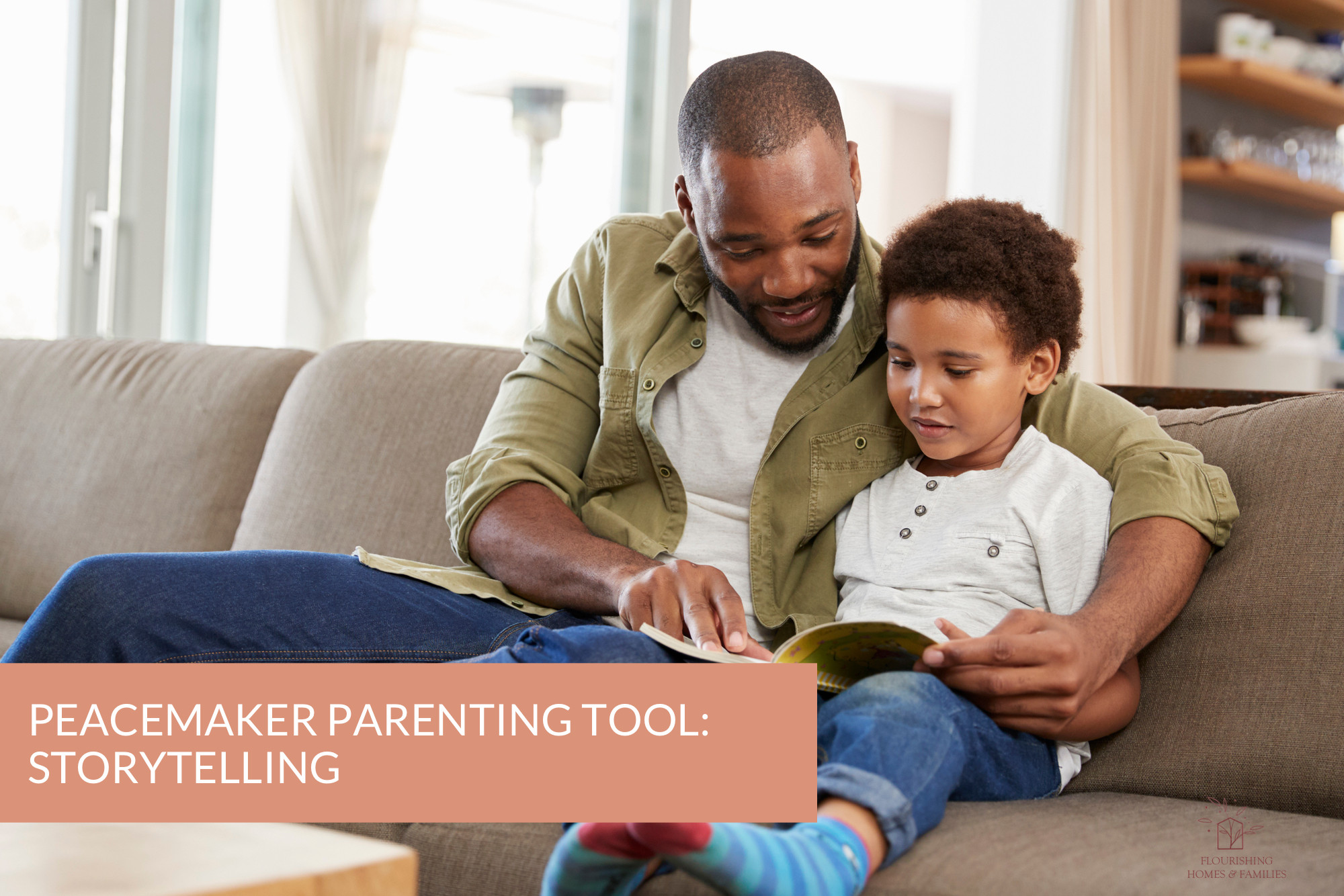
Storytelling is a powerful tool to help children learn empathy, understand another person's perspective, process hard experiences and feelings, and brainstorm different ways to respond to specific situations. It can also be used to get an inside look at how your child might learn best, or how they want to be treated by you when they mess up.
THE SCIENCE OF STORYTELLING
Humans are natural storytellers and listeners, and this inclination is deeply ingrained in our biology and psychology and is part of God's beautiful design. Several key reasons explain why stories resonate with us and are so effective in conveying lessons:
- Emotional Connection: Stories often elicit emotions, and these emotional connections help us remember the content more vividly. This is because stories engage both the logical and emotional parts of our brains.
- Neurological Activation: When we hear a well-told story, various parts of our brain become active, including those responsible for language processing, sensory experiences, and even motor functions. This activation increases our engagement with the material.
- Mirror Neurons: These neurons in the brain fire when we observe someone performing an action. When we listen to a story, our mirror neurons enable us to put ourselves in the shoes of the characters, making the story relatable and memorable.
- Retention and Recall: Studies have shown that information presented in a narrative format is more likely to be retained and recalled than data presented in a dry, factual manner. This is because stories create a mental "hook" for memories to latch onto.
TEACHING CHILDREN IMPORTANT LIFE LESSONS
Storytelling can be a potent tool for teaching children critical life lessons. Whether it's honesty, kindness, empathy, or resilience, stories provide a gentle, indirect way to convey these values. Here are some strategies for effectively using storytelling to impart important life lessons to children:
- Character Development: Create relatable characters facing situations that reflect the values you want to teach. As children follow their journeys, they can identify with their challenges, decisions, and growth.
- Moral Dilemmas: Introduce moral dilemmas and let the characters navigate them. This encourages children to think critically and develop their own moral compass.
- Discussion and Reflection: After reading or hearing a story, engage children in open-ended discussions. Ask them about the characters' choices and the consequences of those choices, encouraging them to reflect on the lessons learned.
- Stories from Diverse Perspectives: Share stories from various cultures and backgrounds to broaden children's horizons and foster empathy and understanding for different viewpoints.
JESUS THE MASTER STORYTELLER
If teaching and discipling your children with storytelling seems a little...off the beaten bath, remember that Jesus frequently used stories (parables) to teach important lessons. And that should come as no surprise, considering we're wired for story!
TELL STORIES WITH BOOKS
One of the easiest ways to put storytelling into practice is to read with your children. Books like What Should Danny Do?, My Body Sends a Signal, and Breathe and Squeeze are perfect to teach children about consequences, the physical signs of emotions, and co-regulation, respectfully. (And check out our full list of tools for teaching here.)
TELL STORIES WITH MADE-UP CHARACTERS
You can create an imaginary character and use it to tell stories about specific behaviors, feelings, or struggles your child is struggling with. When our boys were small, we created a little forrest community with several characters. Little Bear was the main character, with Mama Bear, Daddy Bear, Owen Owl, Susie Squirrel, and Granny Bear as supporting characters. At night, we would tell a Little Bear story that either reflected on a difficult moment from that day, or was preparing them for an upcoming big or new experience.
Here are a few examples:
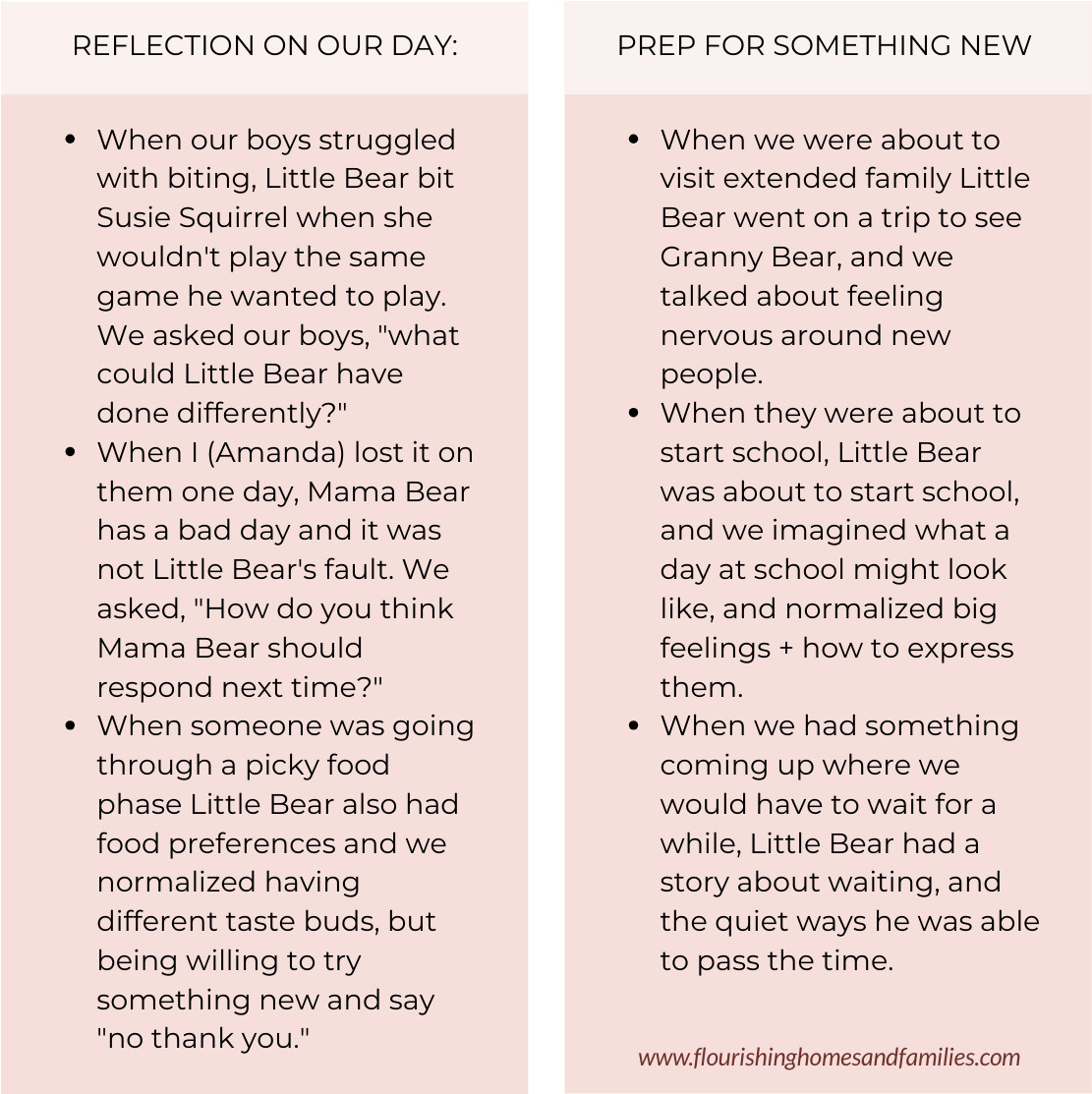
In conclusion, the science behind our attraction to stories is well-grounded in brain science, and it underscores the effectiveness of storytelling as a tool for teaching children important life lessons. By creating relatable characters, presenting moral dilemmas, and encouraging discussion, caregivers and educators can harness the power of narrative to shape the values and beliefs of the next generation. The enduring tradition of storytelling, as exemplified by Jesus' use of parables, demonstrates that the art of storytelling has been a means of imparting wisdom for millennia, and it remains just as relevant and impactful today.
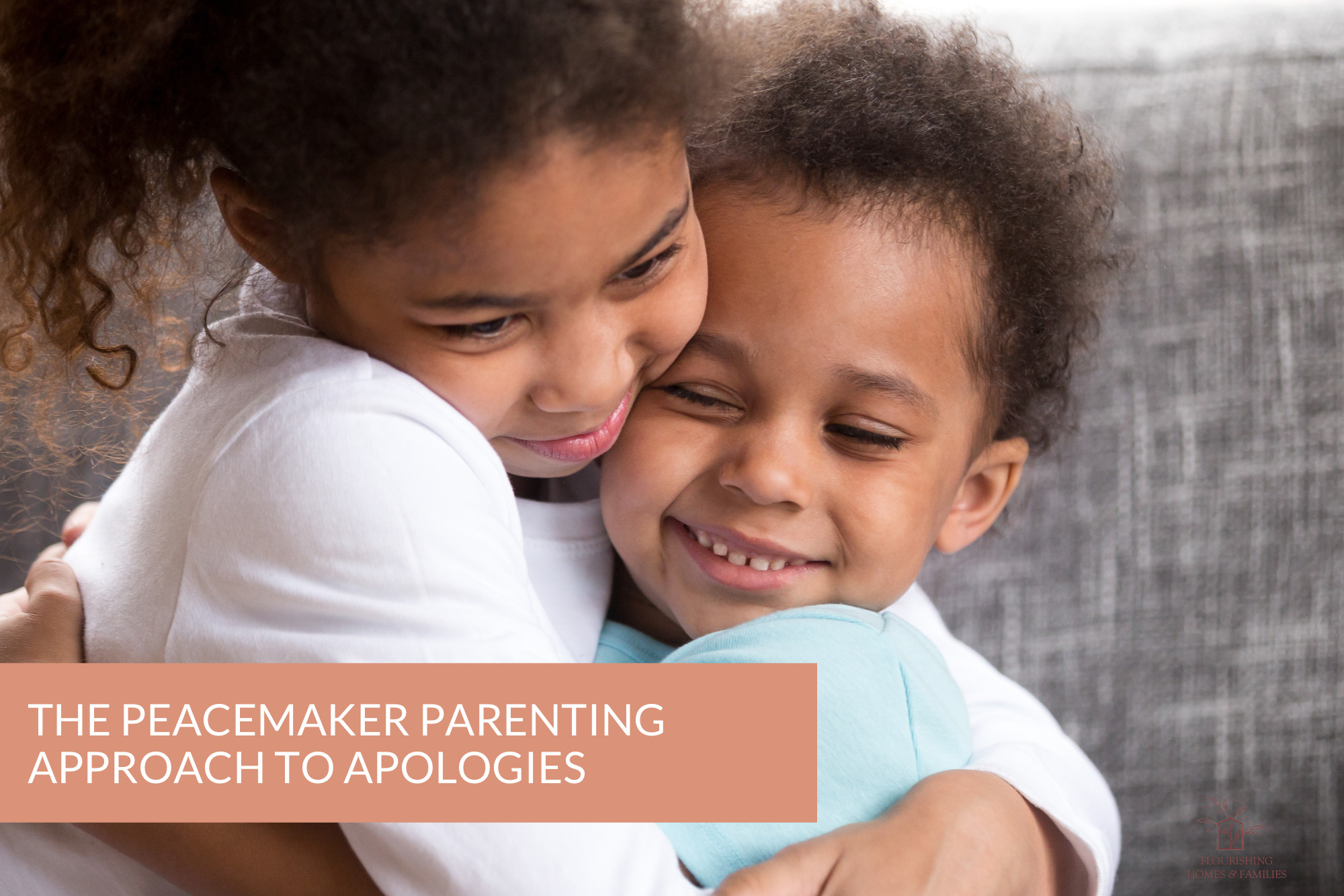
Before we can lead and guide our children to cultivate peace in the midst of conflict, we must work on our mindset. Instead of viewing not wanting to apologize as a sign of rebellion or defiance, or meanness, shift your mindset and train yourself to see it as a sign your child still needs help with interpersonal relationships.
DEVELOPMENTAL PERSPECTIVE
Up to around age 7 , children have a natural and God-given lack of empathy. It isn't a character flaw or because they're mean-spirited. Rather, it is because seeing life through another person's eyes is a profoundly advanced concept, and the part of the brain that is primarily responsible for perspective-taking, is under-developed. Children have a hard enough time identifying their own emotions, much less someone else's!
JESUS-CENTERED PERSPECTIVE
"He who speaks truth tells what is right, But a false witness, deceit." Proverbs 12:17
TEACHING AUTHENTIC APOLOGIES
If a child is not ready to apologize, let's not coerce them to say things they don't mean. Instead,
“I can tell you’re not ready to apologize. That’s okay, lots of people have a hard time saying I’m sorry. Sometimes it’s because we feel shy or embarrassed, and sometimes it’s because we aren’t really sorry and we don’t want to say things that we don’t mean. When you’re ready, it’s usually best to say 'I’m sorry, how can I make this right?’
And leave it. You may find that much of the time they do initiate their apology on their own time. But if it winds up going unsaid, and the relationship is mended anyway, that may be a wonderful time to teach about grace and forgiveness.
TEACH WITH A TOOL
The Daniel Tiger App has a great little jingle to help remind kids how to say "I'm sorry, now how can I help?"
DEVELOPMENTAL PERSPECTIVE
Up to around age 7 , children have a natural and God-given lack of empathy. It isn't a character flaw or because they're mean-spirited. Rather, it is because seeing life through another person's eyes is a profoundly advanced concept, and the part of the brain that is primarily responsible for perspective-taking, is under-developed. Children have a hard enough time identifying their own emotions, much less someone else's!
JESUS-CENTERED PERSPECTIVE
"He who speaks truth tells what is right, But a false witness, deceit." Proverbs 12:17
TEACHING AUTHENTIC APOLOGIES
If a child is not ready to apologize, let's not coerce them to say things they don't mean. Instead,
“I can tell you’re not ready to apologize. That’s okay, lots of people have a hard time saying I’m sorry. Sometimes it’s because we feel shy or embarrassed, and sometimes it’s because we aren’t really sorry and we don’t want to say things that we don’t mean. When you’re ready, it’s usually best to say 'I’m sorry, how can I make this right?’
And leave it. You may find that much of the time they do initiate their apology on their own time. But if it winds up going unsaid, and the relationship is mended anyway, that may be a wonderful time to teach about grace and forgiveness.
TEACH WITH A TOOL
The Daniel Tiger App has a great little jingle to help remind kids how to say "I'm sorry, now how can I help?"
LOOKING FOR MORE?
The Our Siblings Workshop talks a lot about apologies and teaching young children how to bring peace to conflict. You can learn more here.
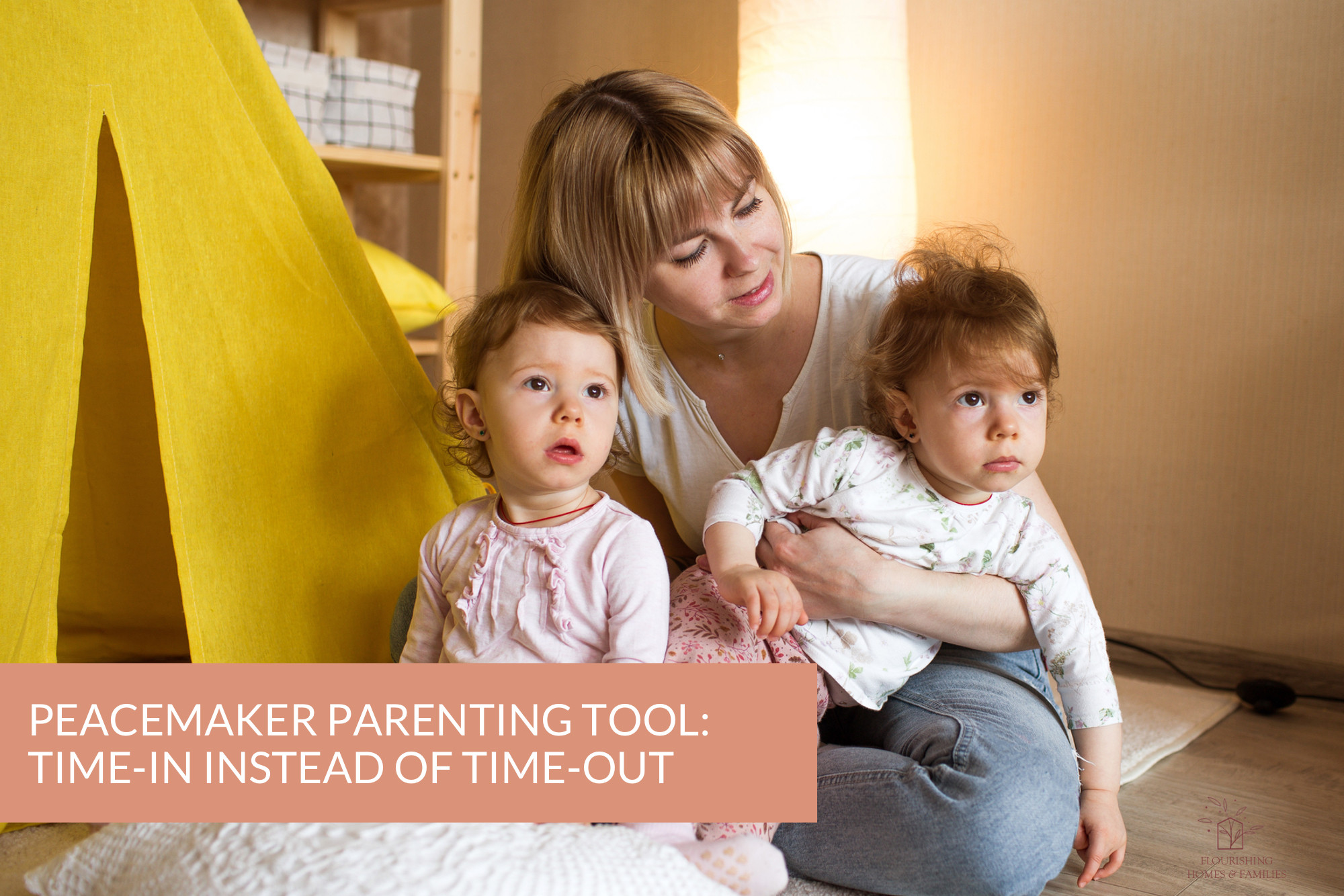
WHAT IS A TIME-IN?
A time-in is an alternative approach to misbehavior, meltdowns, tantrums, and impulsive outbursts that involves guiding your child to a safe space where you can use co-regulation strategies and emotion coaching to help them calm their bodies and process their emotions. This helps children develop emotional intelligence and gives them tools to deal with strong emotions in a healthy and safe way. It also allows them to remain supported while feeling the full range of emotions.
USE A GRACE SPACE (OR CALM DOWN SPACE)
While a time-in can happen anywhere, at any time (because its foundation is a connected and supporting parent-child relationship), creating a Grace Space (or calm down space) at home that is designated for time-ins will help establish rhythm and familiarity for a young child who is learning to regulate emotions. Check out this article on how to create a Grace Space.
REFRAME TIME-OUT
Many peaceful and respectful parenting voices use the term Time-In instead of time out, but we want to give you a helpful analogy that you can use without having to change up your language.
In traditional parenting, time-outs are more like a penalty box in hockey - a penalty or punishment, that leaves a child alone to "think about it". Because parenting as a peacemaker means that we do not withhold our affection, connection, or protection, a time out is more like a time out in football - when the team takes a break to regroup, rest, regulate, and problem-solve. This will look different from family to family (and sometimes even within families moment by moment!). The key is that the parent or caregiver is regulated and able to meet the emotional, physical, and sensory needs of the child so they can learn to regulate as well.
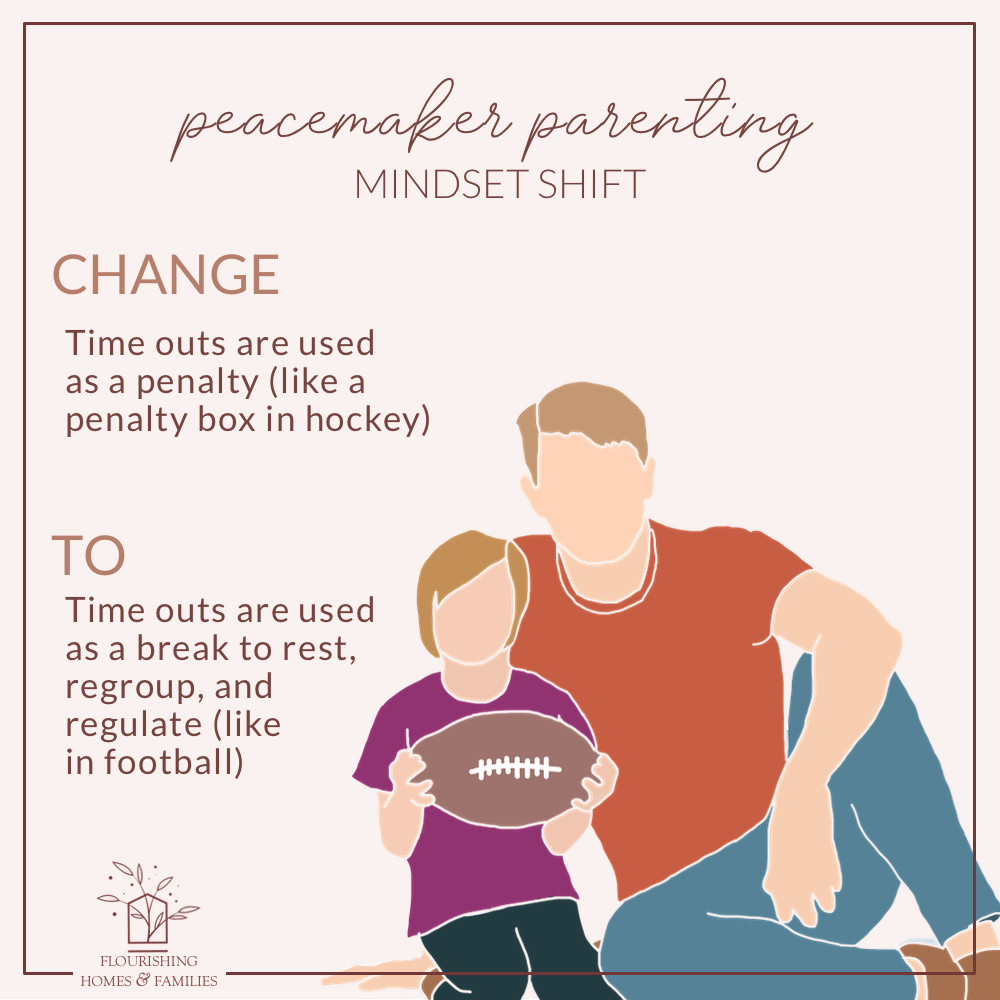
WHY THIS MINDSET MATTERS:
ISOLATION VS. CO-REGULATION
Sending a child to their room or a timeout isolates them for being dysregulated, which is largely outside their control. Their central nervous system learns how to calm down by being in the presence of a calm adult nervous system, a process called coregulation. They may come out of timeout no longer screaming or crying, but their nervous system likely will not have truly calmed down, which keeps them in a cycle of big feelings > bad behavior > time out.
PUNISHMENT VS. DISCIPLINE
Isolating a child for their behavior or immature expressions of feelings punishes them for what they did wrong, but it doesn't teach them how to do better. Discipline requires us to teach (disciple) them and guide them towards maturity. A time-in is essentially a collaborative time-out, and it provides an opportunity to teach a child through difficult situations.
SELF-CENTERED VS. TEAM-CENTERED
Time-out in the form of isolation teaches the child to focus on themselves and their behavior. Approaching timeout as a team-building opportunity (like in football) teaches a child to be aware of the family as a whole, and allows children and caregivers to learn from each other and problem-solve together.
WHAT AGES ARE TIME-INS BEST FOR?
Time-Ins are especially helpful for toddlers and preschoolers due to their under-developed skills of self-regulation. As children enter middle childhood, they will begin to grow their ability and capacity for self-regulation, meaning they will not need the help of a parent or caregiver quite as often. However, neurodiverse children, as well as kids who are still learning how to calm their nervous systems, may need a supportive adult to guide them.
REMEMBER - THE KEY TO AN EFFECTIVE TIME-IN ISN'T A PRETTY SPACE OR HAVING LOTS OF TOOLS, IT IS YOU! So when it's really rough - taking a parent time out is totally okay! You can't help a child learn to regulate if you are dysregulated!

Emotions are an integral part of the human experience, and helping young children understand their emotions is an important part of parenting! By equipping them with emotional intelligence early on, we empower them to navigate life's ups and downs more effectively.
Parenting as a Peacemaker means we look first to Jesus. As both fully God and fully human, He experienced the full range of human emotion. From joy and delight to frustration and anger, from compassion and empathy to grief and anxiety, Jesus reveals to us that emotions are natural, neutral, and necessary.
Why Teach Children About Emotions?
Emotional Regulation: Teaching children to recognize and understand their emotions helps them learn how to manage and regulate them. This skill is essential for maintaining healthy relationships, making thoughtful decisions, and coping with stress.
Improved Communication: When children can express their feelings effectively, it enhances communication with peers and adults. They can better articulate their needs and concerns, reducing frustration and misunderstandings. This also helps mitigate emotional outbursts that become physical.
Empathy: Understanding their emotions also fosters empathy, as children become more attuned to the feelings of others. Empathetic children are more likely to build strong, positive relationships and contribute positively to their communities. Remember, this is something that grows and matures over many years, and is largely dependent on brain development!
Conflict Resolution: Emotional awareness equips children with the tools to resolve conflicts peacefully. They can identify the emotions driving a disagreement and work towards finding solutions that address everyone's needs and concerns.
Practical Activities to Teach Children About Emotions
The Emotion Thermometer: Use a thermometer to help children gauge the intensity of their emotions. This visual aid makes discussing emotions easier and more concrete. Encourage them to point to the temperature that matches how they feel, from icy-cold (calm) to blazing-hot (angry).

Emotion Charades: Play emotion charades by acting out various emotions without using words. This fun game helps children recognize and express emotions through body language and facial expressions.
Feelings Faces Art: Create a "Feeling Faces" art project. Provide magazines or printouts of different facial expressions and ask children to make a collage of various emotions. This activity encourages discussion about emotions while being creative.
Feelings Flashcards: Craft a set of emotion flashcards with pictures depicting different emotions. Show these cards to children, ask them to identify the emotion, and share a time when they felt that way. This helps them connect emotions to their own experiences.
Books + Stores Read books with emotional themes together. After each story, discuss how the characters felt and why. Encourage children to relate the emotions in the book to their own experiences and feelings.
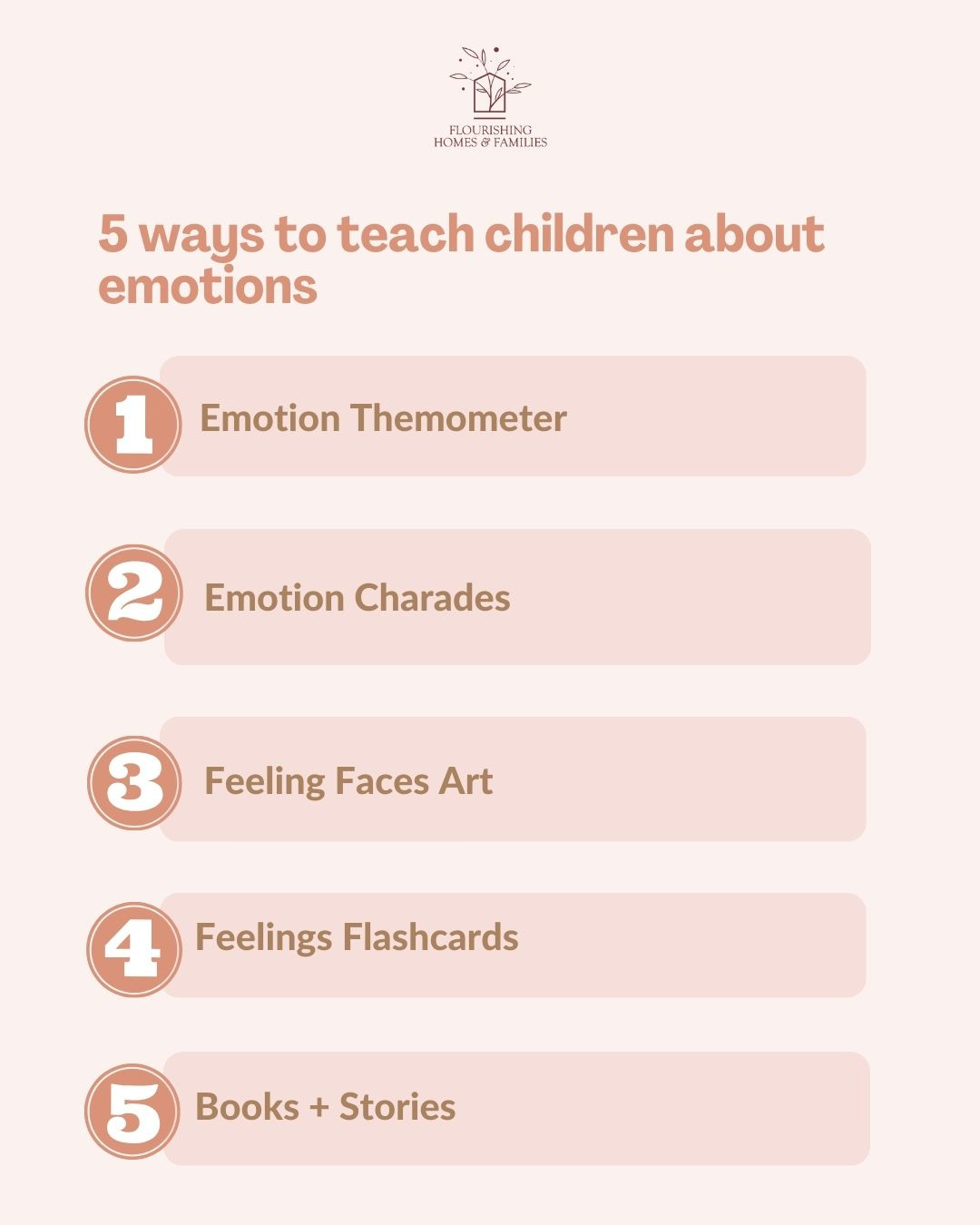
Teaching children about emotions is a sacred journey of nurturing their hearts and souls. It's an opportunity to help them develop not just emotional intelligence but also a deeper understanding of themselves and their place in the world. Just as Jesus embraced and understood the emotions of those He touched, we can guide our children toward emotional maturity with a gentle, Jesus-centered spirit. By doing so, we provide them with a strong foundation for emotional well-being and for living out the teachings of Christ in their daily lives.
In nurturing a child's emotional intelligence, we equip them to better serve others, build lasting relationships, and walk in the light of God's love.
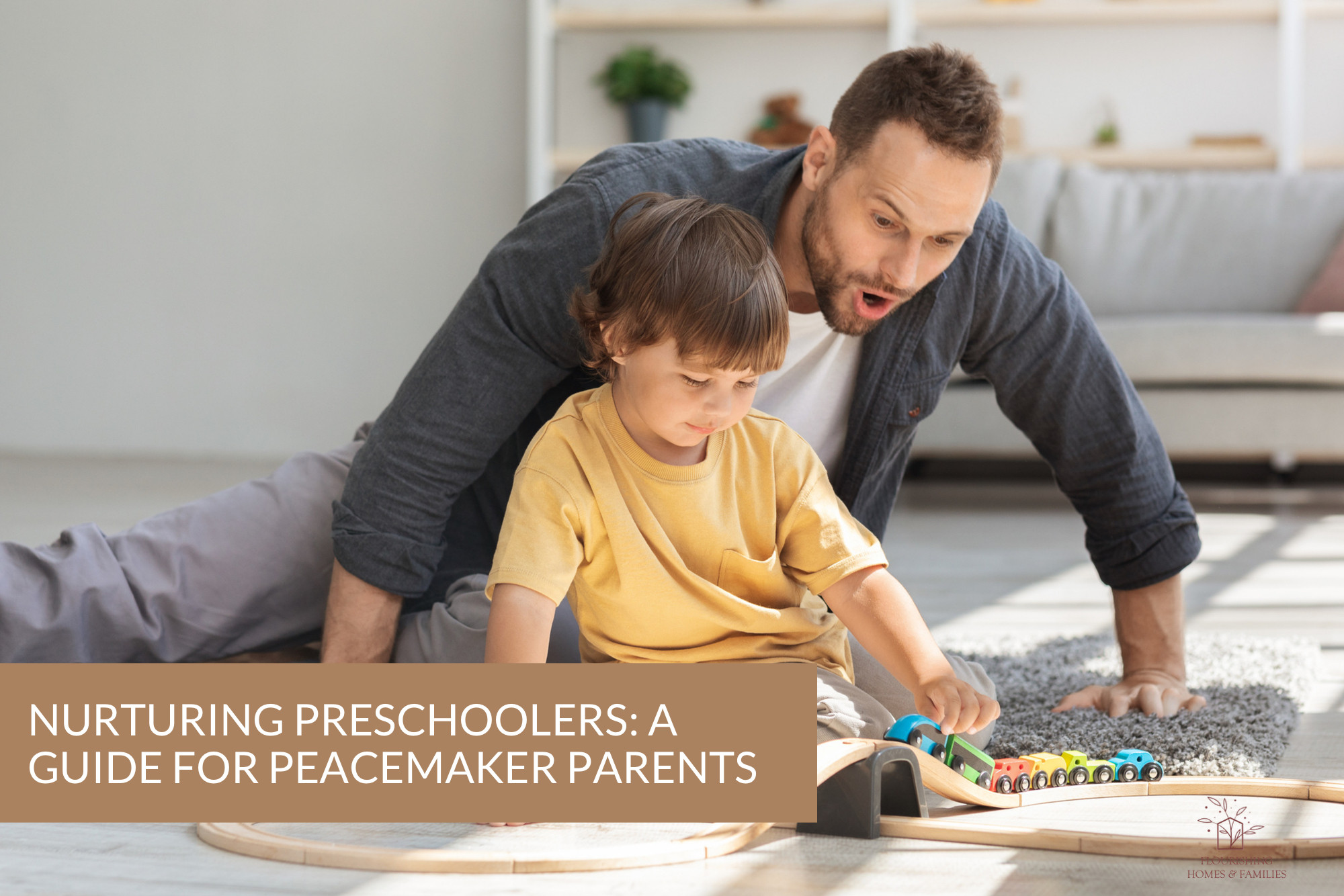
There was a time when the preschool years were affectionately known as the "Wonder Years". And while you might read that and think "Of course they were - I'm always wondering what the right thing to do is with my preschooler," the term Wonder Years was actually coined as a nod to the inherent wonder and curiosity of 3, 4, 5, and 6-year-olds.
The preschool years are typically defined as ages 3.5-5.5. It's during this phase that children start developing a sense of self, and though they're still very dependent on parents and caregivers for the meeting of physical and emotional needs, they're also extremely interested in learning about their own independence. They learn through experience, and exploring their world, testing limits and boundaries, and discovering new skills are full of wonder and excitement.
As you embark on this beautiful journey of raising preschoolers, here are a few things your preschooler needs to thrive:
Unconditional Love and Protection
- Parenting as a Peacemaker means we start by understanding that receiving and accepting God's unconditional love for you so that you can extend that kind of resplendent love to your preschooler. Let them know they are loved and cherished, and nothing they do will change that.
- Encourage open communication and assure them that they can always talk to you about anything.
Respect for Individuality
- Recognize that each child is unique and created in God's image. Embrace and celebrate their individuality.
- Encourage their interests and passions, even if they differ from your own. One very practical way to do this is to show genuine interest in what they delight in, get curious about it, and join them in that interest.
Peacemaker Discipline (Discipline as Discipleship)
- Shift from punishment-based discipline to a peacemaking approach rooted in Jesus-centered discipleship.
- Discipline with love, empowering your preschooler for the future by teaching and building skills, reinforcing family values, and scaffolding their learning.
Structured Routine with Flexibility
- Establish a daily routine that provides stability and security for your preschooler.
- Allow room for flexibility to accommodate their changing needs and interests, as well as to meet the needs of each family member.
Connection + Quality Time
- Prioritize spending quality time with your child. Engage in activities that promote bonding and connection.
- Try to engage in 10 minutes of child-led play or activity every day.
Age-appropriate Independence
- Foster independence by giving your child age-appropriate responsibilities and choices.
- Teach them to make decisions by giving choices within wide boundaries.
Emotional Regulation
- Help your preschooler start learning to identify and express their emotions in healthy ways.
- Remember that co-regulation is the foundation for self-regulation. Your child's nervous system will learn self-regulation by experiencing it with you.
Free time for Curiosity and Learning
- Support their natural curiosity through exploration and play.
- Build unscheduled and unstructured free time into your day so they have time to pursue their own curiosity.
You have a unique opportunity to raise thriving preschoolers who not only grow in wisdom and grace but also understand the depth of God's love for them as His image bearers. Parenting through the "wonder years" can feel overwhelming at times. Don't forget to sit back and watch your child flourish as they journey through the precious years of preschool, being exactly who God made them to be.
Want to learn more about Peacemaker Parenting Preschoolers? Our upcoming LIVE workshop will fill your parenting toolbox with trust-based, peacemaking parenting tools, especially for the preschool years.
